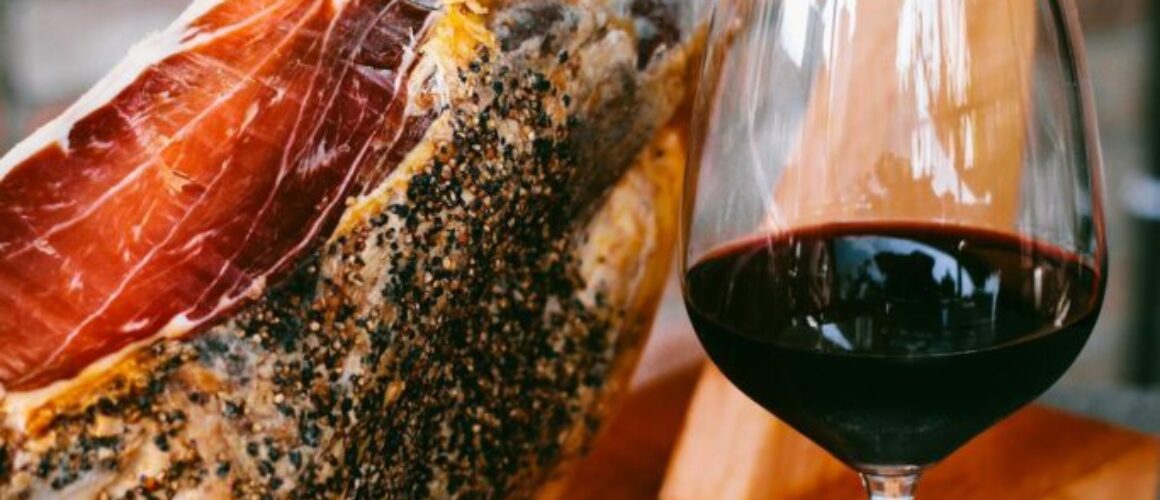The History of Jamón Ibérico: Madrid’s Favourite Ham
Jamón Ibérico, often considered Spain’s most prized delicacy, holds a rich history that stretches back centuries. Revered for its distinctive flavour, this cured ham has become an integral part of Spanish culture and cuisine. In Madrid, the capital city of Spain, Jamón Ibérico is not just food—it’s a symbol of culinary excellence, heritage, and tradition. Understanding its history gives insight into why it remains Madrid’s favourite ham and a beloved staple throughout the country.
Ancient Origins of Jamón Ibérico
The roots of Jamón Ibérico can be traced back to the Iberian Peninsula, where ancient civilizations like the Celts and the Romans first began curing pork to preserve it. These early forms of ham were salt cured, a technique that evolved over centuries to create the refined product we know today.
The Iberian pig, from which Jamón Ibérico is derived, is a special breed that has thrived in Spain for millennia. Unique to the peninsula, this breed’s natural diet and outdoor lifestyle in dehesas (Mediterranean oak forests) give the ham its iconic flavour. Acorn-fed Iberian pigs (known as “pata negra”) produce the highest quality Jamón Ibérico, which is recognized by its rich, nutty taste and melt-in-your-mouth texture.
Evolution of Jamón in Medieval Spain
During the Middle Ages, the popularity of pork products grew throughout Spain, but particularly in the regions around Madrid. By this time, the methods of dry curing ham had advanced significantly, allowing for the development of specific regional techniques that continue to be used today. The mountainous areas around Madrid, with their cool and dry climate, were ideal for curing ham, and soon Jamón Ibérico became a staple for both the elite and commoners.
Religious and social influences also played a role in shaping the tradition of consuming pork. After the Reconquista, the consumption of pork, including Jamón Ibérico, became a symbolic affirmation of Christian identity in a region recovering from centuries of Moorish influence.
Jamón Ibérico in Modern Spanish Culture
By the 20th century, Jamón Ibérico had cemented its status as a luxury food in Spain, especially in Madrid. As Spain’s economy grew and modernized, so too did the production and distribution of this famed ham. While Jamon Serrano is more common and widely available, it’s Jamón Ibérico that Madrid natives and food aficionados regard as the crème de la crème of cured meats.
In the 1980s and 1990s, Spain began establishing strict regulations for Jamón Ibérico production to ensure its quality. The Denomination of Origin (DO) system was introduced, protecting certain regions and methods of production. For example, Jamón Ibérico de Bellota (acorn-fed ham) received a designation indicating its premium quality, and producers in areas like Guijuelo, Extremadura, and Jabugo were recognized for their excellence in craftsmanship.
The Role of Jamón Ibérico in Madrid’s Gastronomy
Madrid, a bustling metropolis with a dynamic food scene, is deeply connected to the tradition of Jamón Ibérico. Visitors and locals alike can find it in almost every tapas bar, high-end restaurant, and traditional market. The Mercado de San Miguel is particularly famous for offering some of the best Jamón Ibérico in the city, where food enthusiasts can sample thinly sliced, perfectly cured ham that melts in the mouth.
Additionally, Madrid is home to a wide array of Jamón Ibérico tasting experiences, where experts guide participants through the differences between Jamón Ibérico de Bellota and Jamón Ibérico Cebo (grain-fed ham). These tastings provide insight into the art of ham slicing (corte de jamón), a skilful process that is crucial to fully enjoying this delicacy.
How to Enjoy Jamón Ibérico in Madrid
There’s a reason why Jamón Ibérico is so beloved in Madrid—it pairs perfectly with a variety of traditional Spanish foods and drinks. Many Madrileños enjoy thin slices of Jamón Ibérico paired with queso manchego, another regional delicacy, or with pan con tomate, a simple yet flavourful dish consisting of bread rubbed with ripe tomatoes, olive oil, and a sprinkle of salt.
In Madrid, Jamón Ibérico is also enjoyed alongside a glass of Spanish wine, particularly Rioja or Ribera del Duero reds. The saltiness and richness of the ham complement the bold, tannic flavours of these wines, creating an unforgettable pairing that is quintessentially Spanish.
The Global Popularity of Jamón Ibérico
Though Jamón Ibérico is firmly rooted in Spanish culture, its popularity has spread worldwide. Today, it is celebrated internationally as one of the finest cured meats available. Madrid, being a global city, has played a crucial role in the export and promotion of Jamón Ibérico to the rest of the world.
As more people discover the unique flavours and historical significance of this ham, Madrid remains at the heart of Jamón Ibérico appreciation. From Michelin-starred restaurants to local tapas bars, the presence of this exquisite ham is a testament to its enduring cultural and culinary significance.
Conclusion
The history of Jamón Ibérico is a story of Spain’s rich culinary heritage, one that has evolved over centuries and continues to thrive, especially in Madrid. From its ancient origins to its modern-day prominence, Jamón Ibérico has become a symbol of quality and tradition, revered by locals and visitors alike. Whether enjoyed in a bustling Madrid market or a fine dining establishment, the complex flavours of Jamón Ibérico are sure to leave a lasting impression, reinforcing its place as Madrid’s favourite ham.
Madrid’s deep connection to Jamón Ibérico is more than just about food—it’s about history, culture, and the passion of a city that embraces its traditions while sharing them with the world.
